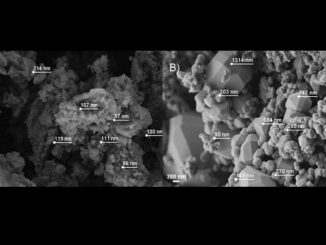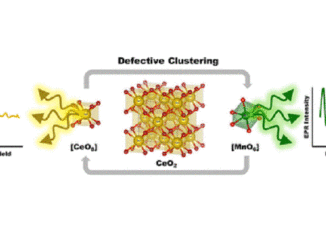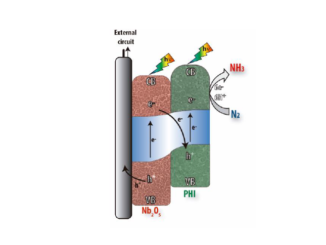
Achieving high energy storage density simultaneously with large efficiency and excellent thermal stability by defect dipole, and microstructural engineering in modified-BaTiO3 ceramics
Abstract: The electric energy produced from renewable sources can assist in shifting to clean energy. An efficient energy storage system is needed to use this energy for an appropriate time. High breakdown strength (Eb) and a significant difference between (Pmax) and (Pr) are required to achieve this goal. Here double-hysteresis-loop ceramics with different polarization are achieved by B-site co-doping engineering to control the defect structure. According to the structural analysis, the (Ni2+, Cu2+), (Mg2+, Cu2+), and (Mg2+, Ni2+) co-dopant ions were successfully incorporated into the BTO unit cell. Results show that the sample co-doped with Mg2+ and Ni2+ exhibits the apparent characteristics of a double hysteresis loop, higher polarization, and more considerable breakdown strength (Eb). This behavior was explained based on the defective dipoles’ formation. Low valence (Ni2+, Cu2+), (Mg2+, Cu2+), and (Mg2+, Ni2+) ions co-substitute Ti4+ ions to form
; [M= Mg2+, Cu2+, Ni2+] defect dipoles with neighbouring oxygen vacancies. The domain wall was pinned by the defect dipoles and prevented from moving by the oxygen vacancies, resulting in a pinched hysteresis loop that resembles the double hysteresis loop found in antiferroelectric materials. A high energy storage density and efficiency are thereby produced. At an electric field of 159 kV/cm, the BMNT sample displayed an energy storage density (Wrec) of 1.585 J/cm3, which was around 6 times more than that of the pure sample, and an efficiency (η) of about 94%. The BMNT sample is also exceptionally stable over a range of temperatures and frequencies, making them a good candidate for applications in the field of energy storage in the future.
Author(s): Alkathy, M. S.; Rahaman, A.; Mastelaro, V. R.; Zabotto, F. L.; Milton, F. P.; Eiras, J. A.
Journal of Alloys and Compounds
Published: February 2023
DOI: https://doi.org/10.1016/j.jallcom.2022.167887
CDMF
The CDMF, hosted at the Federal University of São Carlos (UFSCar), is one of the Research, Innovation and Dissemination Centers (RIDC) supported by the São Paulo State Research Support Foundation (Fapesp), and also receives investment from the National Council Scientific and Technological Development (CNPq), from the National Institute of Science and Technology of Materials in Nanotechnology (INCTMN).




